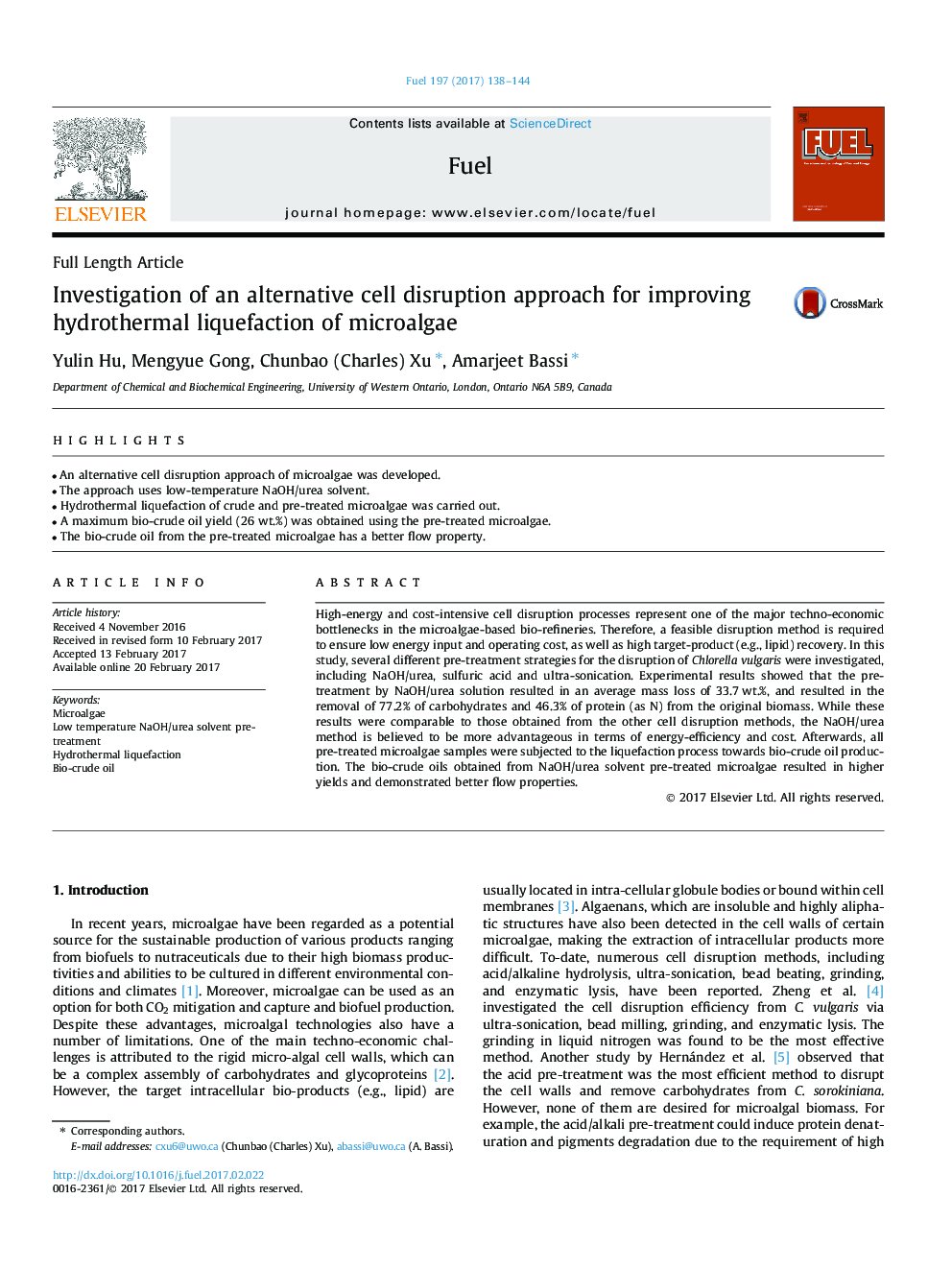| Article ID | Journal | Published Year | Pages | File Type |
|---|---|---|---|---|
| 6475170 | Fuel | 2017 | 7 Pages |
â¢An alternative cell disruption approach of microalgae was developed.â¢The approach uses low-temperature NaOH/urea solvent.â¢Hydrothermal liquefaction of crude and pre-treated microalgae was carried out.â¢A maximum bio-crude oil yield (26 wt.%) was obtained using the pre-treated microalgae.â¢The bio-crude oil from the pre-treated microalgae has a better flow property.
High-energy and cost-intensive cell disruption processes represent one of the major techno-economic bottlenecks in the microalgae-based bio-refineries. Therefore, a feasible disruption method is required to ensure low energy input and operating cost, as well as high target-product (e.g., lipid) recovery. In this study, several different pre-treatment strategies for the disruption of Chlorella vulgaris were investigated, including NaOH/urea, sulfuric acid and ultra-sonication. Experimental results showed that the pre-treatment by NaOH/urea solution resulted in an average mass loss of 33.7Â wt.%, and resulted in the removal of 77.2% of carbohydrates and 46.3% of protein (as N) from the original biomass. While these results were comparable to those obtained from the other cell disruption methods, the NaOH/urea method is believed to be more advantageous in terms of energy-efficiency and cost. Afterwards, all pre-treated microalgae samples were subjected to the liquefaction process towards bio-crude oil production. The bio-crude oils obtained from NaOH/urea solvent pre-treated microalgae resulted in higher yields and demonstrated better flow properties.
